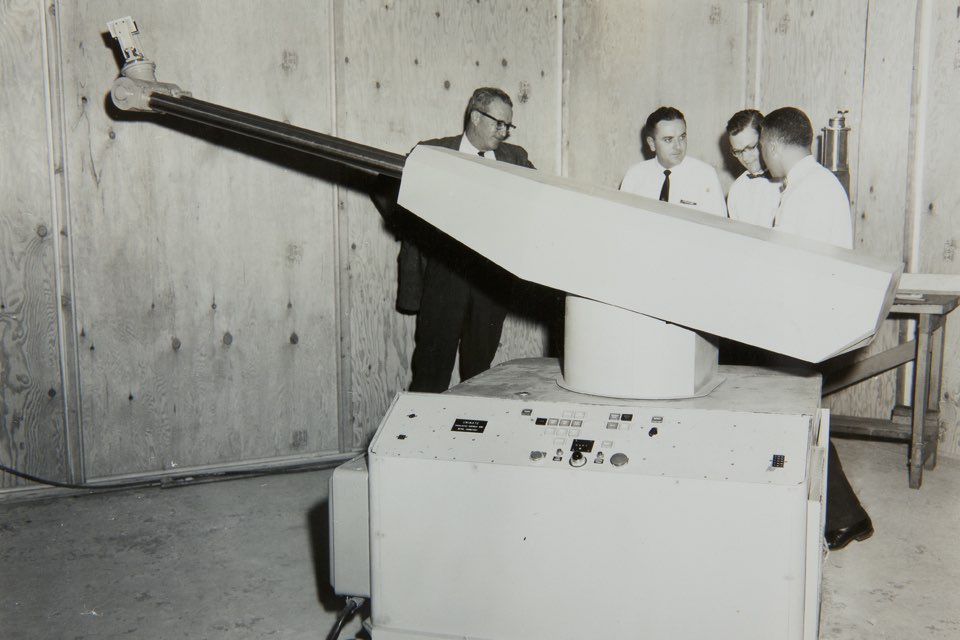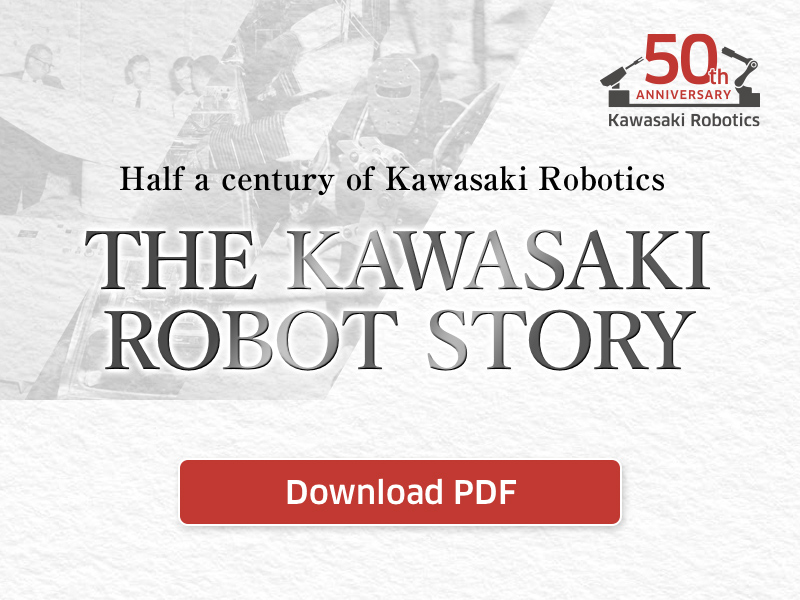From the Birth of Industrial Robots
in the United States to Their Launch in Japan
The first industrial robot was born out of an encounter between an inventor and an entrepreneur in 1956 America.
When Kawasaki Heavy Industries, or Kawasaki, imported and domestically manufactured the Unimate,
the first industrial robot whose name means “working mate with universal capability”, the history of industrial robots in Japan began.
The World’s First Industrial Robot Born in the United States
The world’s first industrial robot was brought to life in the United States in 1962. The idea of the industrial robot was born from American engineer, George Charles Devol, Jr. in 1954. Devol met Joseph Frederick Engelberger, an entrepreneur and the man who would come to be known as "the father of robotics", and convinced him of the potential of his idea. And in 1961, the two Americans established Unimation Inc., a venture company specializing in industrial robot development. In the following year, they succeeded in the trial production of the world’s first industrial robot, the Unimate. US car manufacturers already working on factory automation at the time showed interest in the Unimate, and with the deployment of the robot in the General Motors Company (GM)’s die-casting factory, the practical use of industrial robots commenced.

Behind the Introduction of an American Industrial Robot into Japan
The introduction of industrial robots in Japan began in 1966 when Engelberger visited Japan. Engelberger was invited to Tokyo where he gave a lecture and introduced the usefulness of industrial robots in front of approximately 700 executives interested in robot applications. The question-and-answer session following his lecture lasted over two hours. This event confirmed Japan’s marketability to Unimation, which had been looking to the Asian market for its business expansion.
Unimation was looking for a technical partner capable of precisely manufacturing its industrial robots in Japan in order to enter the Japanese market. Unimation initially short-listed seven companies, most of which were electrical manufacturers. Kawasaki Aircraft, predecessor of Kawasaki Heavy Industries, was not included in that list at first.
However, in 1967, once management at Kawasaki Aircraft at the time became aware that Unimation was looking for a technical partner to produce its industrial robots in Japan, they immediately visited Unimation in the United States and aggressively began negotiations. They predicted that there would be a growing demand for the robotics field to address issues of productivity improvement and labor shortage during Japan’s period of rapid economic growth and regarded the move into the robotics field as a key strategy. Although electrical manufacturers had the upper hand in terms of machine control, explanations about the technical capabilities Kawasaki Aircraft accumulated over the years combined with the passion management showed won Engelberger over and Kawasaki Aircraft was chosen by Unimation to become their technical partner in Japan.
In June 1968, Kawasaki Aircraft opened the doors to the “Office for Promoting Domestic Production of Industrial Robot (IR)” in its Mechanical Division. In October of the same year, the technical license agreement was formally made with Unimation.
This is where the history of Kawasaki Robotics as well as industrial robots in Japan began.



